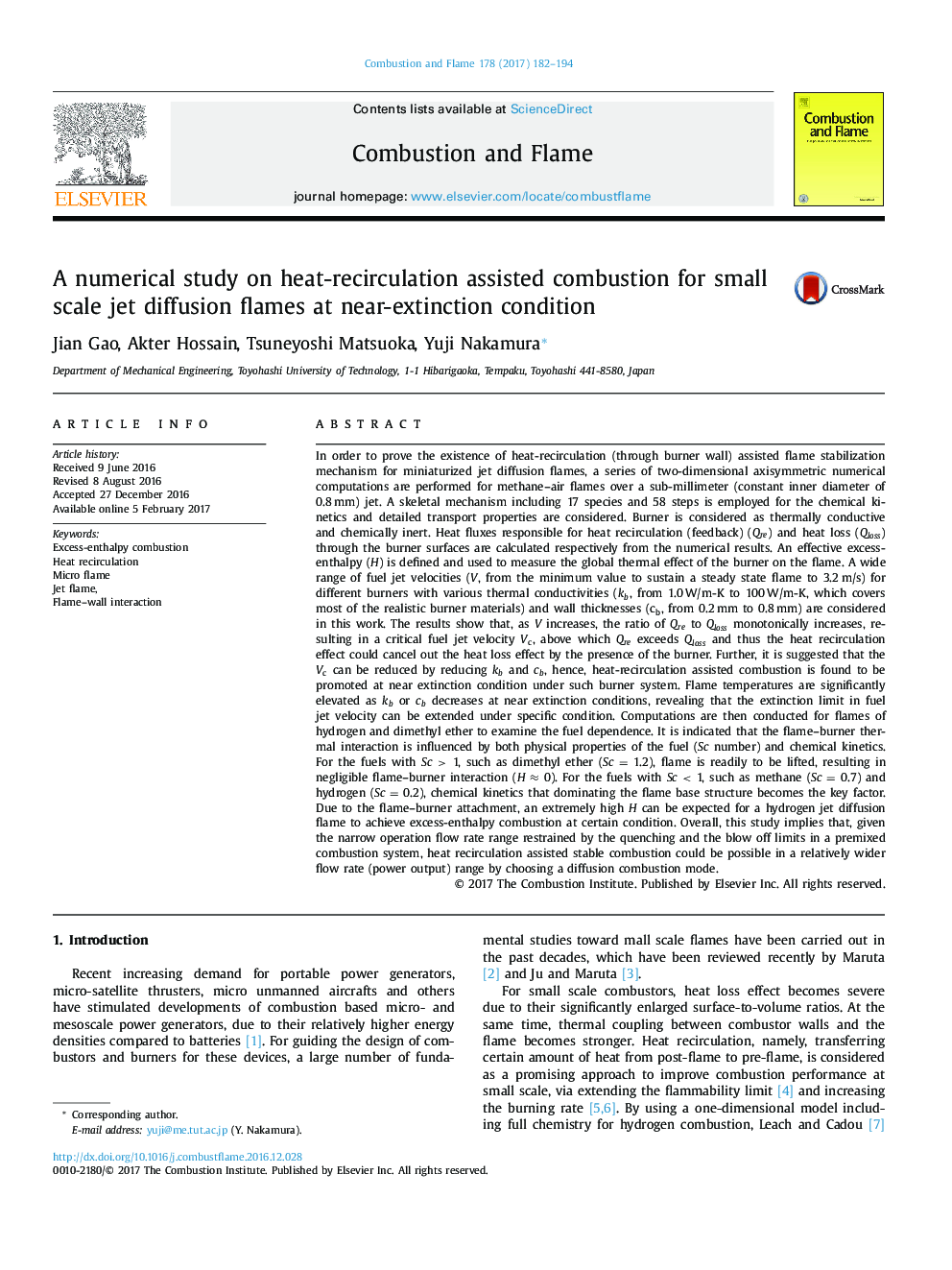| کد مقاله | کد نشریه | سال انتشار | مقاله انگلیسی | نسخه تمام متن |
|---|---|---|---|---|
| 6468584 | 1423559 | 2017 | 13 صفحه PDF | دانلود رایگان |
In order to prove the existence of heat-recirculation (through burner wall) assisted flame stabilization mechanism for miniaturized jet diffusion flames, a series of two-dimensional axisymmetric numerical computations are performed for methane-air flames over a sub-millimeter (constant inner diameter of 0.8Â mm) jet. A skeletal mechanism including 17 species and 58 steps is employed for the chemical kinetics and detailed transport properties are considered. Burner is considered as thermally conductive and chemically inert. Heat fluxes responsible for heat recirculation (feedback) (Qre) and heat loss (Qloss) through the burner surfaces are calculated respectively from the numerical results. An effective excess-enthalpy (H) is defined and used to measure the global thermal effect of the burner on the flame. A wide range of fuel jet velocities (V, from the minimum value to sustain a steady state flame to 3.2Â m/s) for different burners with various thermal conductivities (kb, from 1.0Â W/m-K to 100Â W/m-K, which covers most of the realistic burner materials) and wall thicknesses (cb, from 0.2Â mm to 0.8Â mm) are considered in this work. The results show that, as V increases, the ratio of Qre to Qloss monotonically increases, resulting in a critical fuel jet velocity Vc, above which Qre exceeds Qloss and thus the heat recirculation effect could cancel out the heat loss effect by the presence of the burner. Further, it is suggested that the Vc can be reduced by reducing kb and cb, hence, heat-recirculation assisted combustion is found to be promoted at near extinction condition under such burner system. Flame temperatures are significantly elevated as kb or cb decreases at near extinction conditions, revealing that the extinction limit in fuel jet velocity can be extended under specific condition. Computations are then conducted for flames of hydrogen and dimethyl ether to examine the fuel dependence. It is indicated that the flame-burner thermal interaction is influenced by both physical properties of the fuel (Sc number) and chemical kinetics. For the fuels with Sc > 1, such as dimethyl ether (Sc = 1.2), flame is readily to be lifted, resulting in negligible flame-burner interaction (H â 0). For the fuels with Sc < 1, such as methane (Sc = 0.7) and hydrogen (Sc = 0.2), chemical kinetics that dominating the flame base structure becomes the key factor. Due to the flame-burner attachment, an extremely high H can be expected for a hydrogen jet diffusion flame to achieve excess-enthalpy combustion at certain condition. Overall, this study implies that, given the narrow operation flow rate range restrained by the quenching and the blow off limits in a premixed combustion system, heat recirculation assisted stable combustion could be possible in a relatively wider flow rate (power output) range by choosing a diffusion combustion mode.
Journal: Combustion and Flame - Volume 178, April 2017, Pages 182-194
